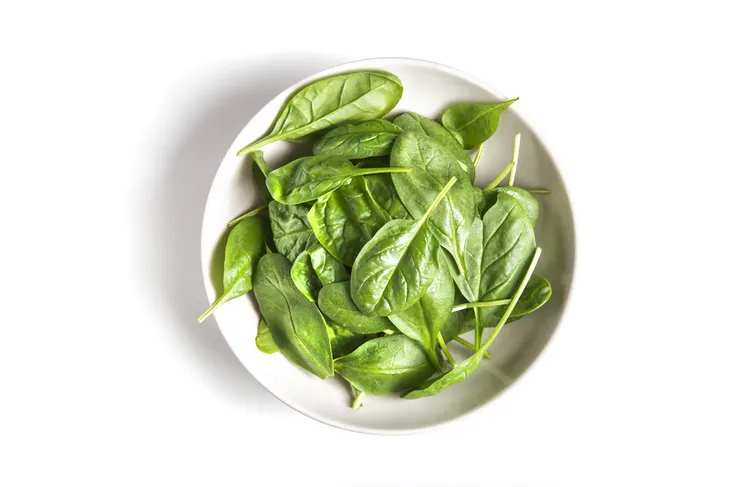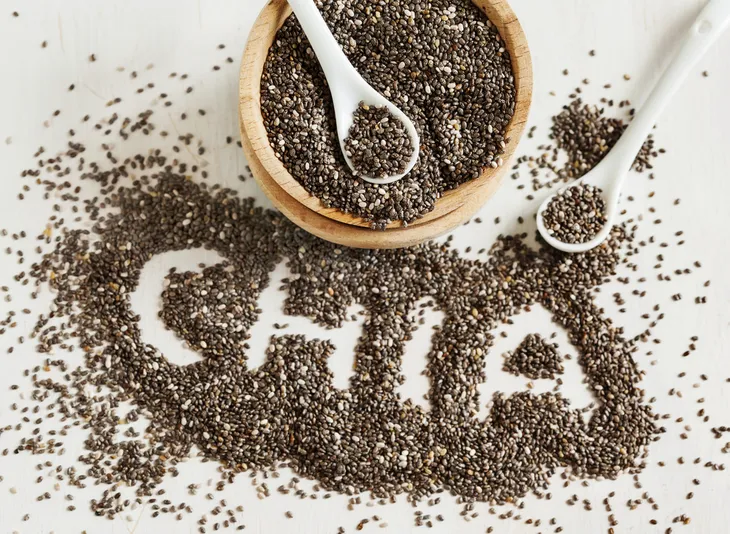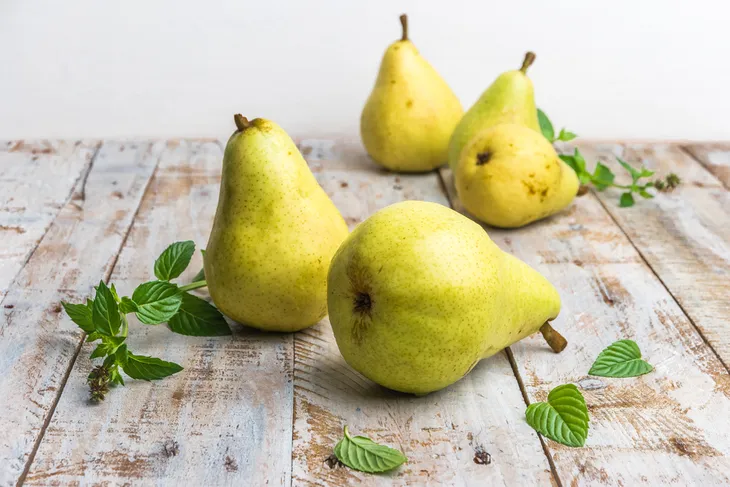We all know that fiber is an important component of a healthy diet. However, we might not know exactly why?
While insoluble fiber aids the body with waste and toxin elimination by combing the intestines and colon for optimal bowel movements waste elimination—soluble fiber helps lower LDL (or bad) cholesterol levels and maintains safe blood sugar levels, preventing diabetes and cardiovascular disease. Another great benefit of fiber is that it keeps us feeling full for longer which can help aid with weight loss.
According to the Academy of Nutrition & Dietetics, every person should try to get about 38-grams of fiber each day. To help with that we’ve created a list of 20 fiber-rich foods we need in our diets to keep our bodies and systems operating harmoniously…
Looking to increase your fiber intake? Try Vitafusion Fiber Well Fit Gummies Supplement – an Amazon bestseller with over 1,500, 4+ star consumer ratings. (As an Amazon associate, this site earns from qualifying purchases).
Want diet & nutrition content delivered straight to your inbox? Sign up for our exclusive diet & nutrition newsletter!
Beans
Beans, beans the magical fruit, the more you eat the more you…well, you know how the rest of the jingle goes. While this little song is rather silly, it might actually stem from the fact that beans are really good for the digestive system because they keep us regular. Because beans are such a good source of fiber, they keep our digestive systems running efficiently as they comb and eliminate waste products from the colon.
If you’re looking for the highest fiber bean, look to black beans (they contain 15-grams of fiber per cup) or navy (white) beans (they contain almost 19-grams per cup). By the way, beans are not a fruit, they’re legumes but the little jingle is catchy.
Whole Grains
We’re taught to stay away from grains for the most part, or at least limit our intake because bread, pasta, rice, etc are all so bad for us. The truth is that no one should be eating a lot of these things, especially if they’re made from white bread or other refined grains. However, whole grains do have some pretty great benefits, so it’s smart to include some whole grains in your diet once in a while.
Just be sure to select whole grain (unprocessed grains) when choosing bread or pasta at the grocery store because then you are keeping the healthy part of the grain intact –the fiber/brain content. This also goes for cereals, crackers, popcorn, and brown rice whenever possible.
Apples
We already know that an apple a day is good for your oral health, but the skin of the fruit is where the rich fiber is located. The same goes for most fruits and vegetables with edible peels (i.e., pears, plums, peaches, potatoes, parsnips, etc.).
Spinach
Popeye might have tossed down a can of spinach for strength, but it’s the fiber in fresh and frozen spinach that gives your body a decent boost in iron boost.
Legumes
Legumes, such as lentils, peas, carob, soybeans, clover, peanuts, alfalfa, and tamarind are all considered stellar sources of fiber. Not only that, but legumes are an excellent source of non-animal based, low fat proteins if you happen to be vegetarian or vegan.
Broccoli
Look at the shape of a broccoli flower. Now think of that veggie combing your intestines and colon of toxins and waste. The shape of this coniferous veggie not only lends itself to self-cleaning—it’s also super high in vitamins K and C, and it contains roughly 3-grams of fiber per cup.
Flaxseeds
Flaxseeds offer an excellent supply of both insoluble and soluble types of fiber. Not to mention a heart-healthy source of good fats, which sprinkle deliciously a top delights like smoothies, oatmeal, or yogurt and fruit. “Flaxseeds reduce cholesterol and help ease the symptoms of menopause,” writes Dr. Axe.
Carrots
Sure, carrots have a reputation for boosting eye health. However, this bunny-favorite veggie is also particularly high in fiber as well as betacarotene. In fact, a half cup of carrots delivers almost 3-grams of fiber, which would make Bugs Bunny proud.
Chia Seeds
Like flaxseeds, these tiny seeds are ripe in fiber. So don’t underestimate them based on their size! Sprinkle just 1-ounce on your smoothie or cereal and you’ll benefit from almost 11-grams of fiber! Johannah Sakimura, RD, who talked to Everyday Health noted that chia seeds are virtually tasteless so don’t be afraid to sprinkle them on top of a meal. They won’t affect any of the other flavors. You could even bake them into bread or use them in meatballs!
Their fiber boost can optimize digestion and make bowel movements much more comfortable. In addition to fiber, Health.com explains that chia seeds are also a good source of omega-3 fatty acids, protein, and a slew of vitamins and minerals.
Quinoa
I love substituting quinoa for pasta and rice because this tiny seed is not only super high in beneficial fiber (at almost 6-grams per one-cup cooked serving)—quinoa is also high in protein at roughly 8-grams grams per prepared cup. While all grains are high in fiber (we previously talked about whole grain, and will eventually get to oatmeal), quinoa is among the best.
Plus it’s gluten-free so it’s easy to digest. According to Dr. Axe, “quinoa is also high in other essential nutrients, such as iron, vitamin B6, potassium and magnesium.”
Raspberries
We don’t need any convincing to eat more berries. These delicious fruits are our favorite summer treat! They’re perfect for adding to a smoothie, some yogurt, or just eating a bowl full on their own. Even when they’re not in season, stoke up on some bags of frozen berries because they’ve got tons of incredible health benefits.
Most berries are superfoods in the sense that they’re packed full of antioxidants, nutrients, and are low in calories. While pretty much all berries are good for us, some are better than others. Raspberries are among the best because of their fiber content. According to the Mayo Clinic, 1-cup of raspberries contains 8-grams of fiber, but adds up to only 64-calories.
In addition to fiber which helps improve our digestive system and keep things moving along, most berries also contain polyphenols and anthocyanins, which “may help fight cancer, reduce inflammation, and ease the symptoms of arthritis,” writes Everyday Health.
Sweet Potatoes
You might be surprised to see any form of potato on this list as something we encourage people to eat, but as with many foods, even though sweet potatoes have healthy benefits, it doesn’t mean we should load up on them. But they are a great addition to any meal because they have a high fiber content. Eat This, Not That says 1-medium sweet potato (baked, with skin) contains 3.8-grams of fiber.
“Fiber has no magical fat-burning properties; simply put, it helps you feel full without adding a lot of extra calories to your diet,” says Jessica Crandall, a Denver-based RD, Certified Diabetes Educator, and National Spokesperson for the Academy of Nutrition and Dietetics to Eat This, Not That! “When you have a baked potato (with skin) instead of a bag of potato chips, for example, you’re not only eating fewer calories, but you’re less likely to feel hungry again an hour later.”
Artichoke
Most people probably don’t eat a lot of artichokes unless they’re added to a meal or dip, and that’s mainly because they’re a little intimidating. But there are a lot of reasons to start learning how to use them more. The biggest reason is because they’re a great source of fiber! Everyday Health writes that one medium sized artichoke adds up to about 7-grams of fiber with only 60-calories.
The best way to prepare them for eating is to either steam them with a little olive oil, garlic and rosemary, or roast them in the oven. Artichoke hearts can also be added to salads, pizza, or scrambled eggs, writes the source.
Peas and Split Peas
Remember when parents would constantly remind us to eat our greens? Well, it turns out they had a point! This green veggie might be small, but it is mighty full of fiber! One cup of green peas boiled accounts for 9-grams of fiber, says the Mayo Clinic.
What’s great about peas is that they’re super easy to add to any meal. Fresh or frozen — it doesn’t matter because you’ll still reap the benefits. “Tossing in a few handfuls of frozen peas is an easy way to add green veggies to pasta and rice dishes,” says Johannah Sakimura, RD to Everyday Health. Another great reason to add peas to your next meal is because they contain much more than just fiber, “peas also supply vitamin A, which may help support healthy skin and eyes, and vitamin K, which may help maintain bone strength.”
Oatmeal
Harvard Health suggests that oatmeal can assist in weight loss because of their high fiber content by creating a more full feeling in the stomach and suppressing appetite. To be exact, Healthline says 1-cup of raw oats contains 16.5-grams of fiber. “Beta-glucan fiber attracts water and increases the viscosity (or thickness) of digested food, which increases the volume of food in the gut. This slows down digestion and the rate that nutrients are absorbed, which in turn increases satiety,” writes Health Harvard. The source also points out that oatmeal can lower LDL, also known as “bad” cholesterol.
While we’re taught to be weary of grains, oatmeal is one of the healthiest grains there is. In addition to lowering cholesterol and high fiber, Healthline says they’re also high in vitamins, minerals and antioxidants.
Brussel Sprouts
Brussel sprouts catch a bad rep as one of those rather disliked veggies at the dinner table, but they’re super healthy, so give them a chance! The Mayo Clinic says 1-cup of boiled brussel sprouts is about 4-grams of fiber. Like many of the other healthy foods on this list, brussel sprouts do more than help boost our fiber intake.
They could also help reduce risk of prostate cancer, according to Men’s Health. The source writes, “Research shows that cruciferous vegetables, like broccoli, cauliflower and brussel sprouts, contain a natural chemical that may prevent cancer from growing.”
Lentils
Lentils aren’t the most exciting food, but they’re super healthy and really versatile. Men’s Health notes that just 1-cup of cooked lentils accounts for a whopping 15-grams of fiber! That A LOT! This alone accounts for about half the daily recommended amount.
“Lentils are a great source of fiber and magnesium,” says McKel Hill, M.S., R.D.N., L.D.N., and Founder of Nutrition Stripped to Men’s Health. Also, they’re full of folate which is an essential vitamin for pregnant women, those with liver disease, and people on certain medications, says Dr. Axe.
Avocado
Even though avocados have been around for a long time, they seem to be having a “moment” in the food industry where many people recently discovered that they’re super yummy and healthy! Even though they have a high fat content, their fat is what’s considered a “healthy fat.” What does this mean? Basically, most of the fat content in avocados is monounsaturated fat which is good for the heart. In addition to this, they’re also packed with fiber. SELF explains that just half an avocado contains 15-grams of fat.
It’s important to note that there are two different types of avocados and their fiber content is different. When picking avocados at the grocery store it seems that Florida avocados, which are smaller and more dimply, are the best choice, but either one will do. “Florida avocados have significantly more insoluble fiber than California avocados. In addition to the fiber, avocados are packed with healthy fats that help lower cholesterol and reduce the risk of heart disease,” says Dr. Axe.
Edamame
Edamame is a popular appetizer served at many Japanese restaurants and a great snack to eat at home because they’re low calorie with tons of fiber. SELF points out that there’s about 8-grams in 1-cup.
“It provides the coveted trifecta of protein, fiber, and healthy fat in one package. Okay, lots of little packages!,” says Johannah Sakimura, RD, to Everyday Health. “And a generous serving of 1 ½-cups of edamame in the pod comes in at only 90-calories. That’s a steal!”
Pear
Pears are a fruit that seriously don’t get enough attention or credit! I’d argue that they’re added to salads more than they are eaten on their own, but pears are actually a great source of fiber. In fact, one medium sized pear accounts for about 5.5-grams of fiber, says the Mayo Clinic.
“Asian pears contain high levels of fiber, but they’re also rich in omega-6 fatty acids associated with healthy cells, brain and nerve function,” writes Dr. Axe.
Looking to increase your fiber intake? Try Vitafusion Fiber Well Fit Gummies Supplement – an Amazon bestseller with over 1,500, 4+ star consumer ratings. (As an Amazon associate, this site earns from qualifying purchases).























